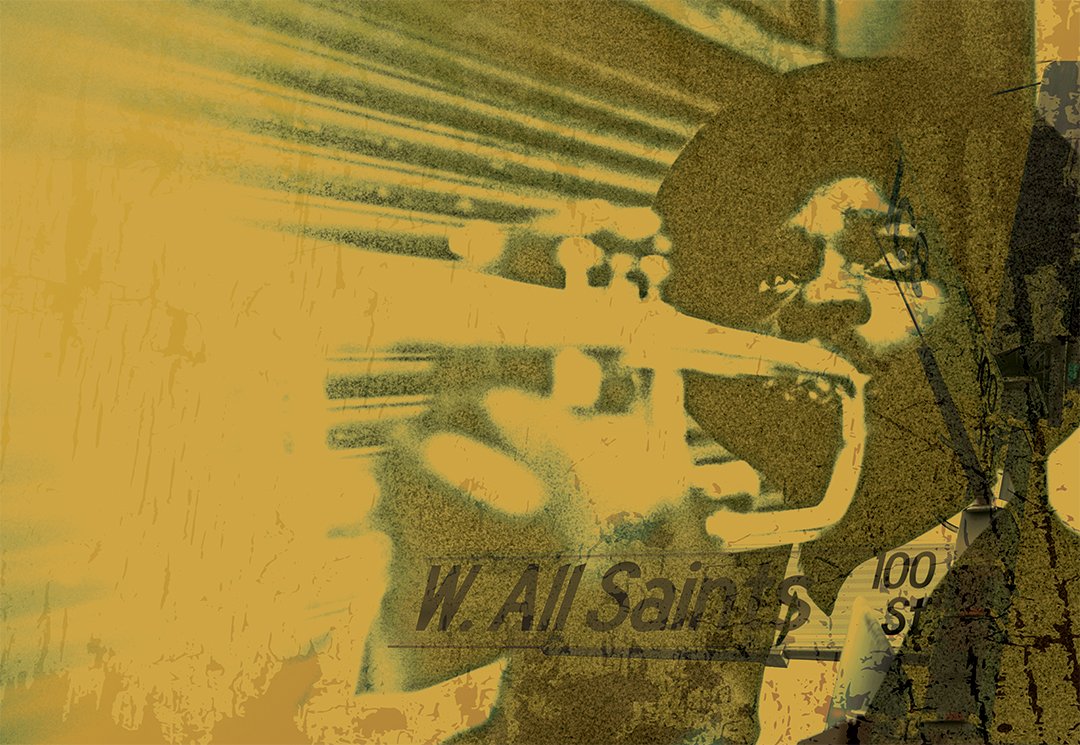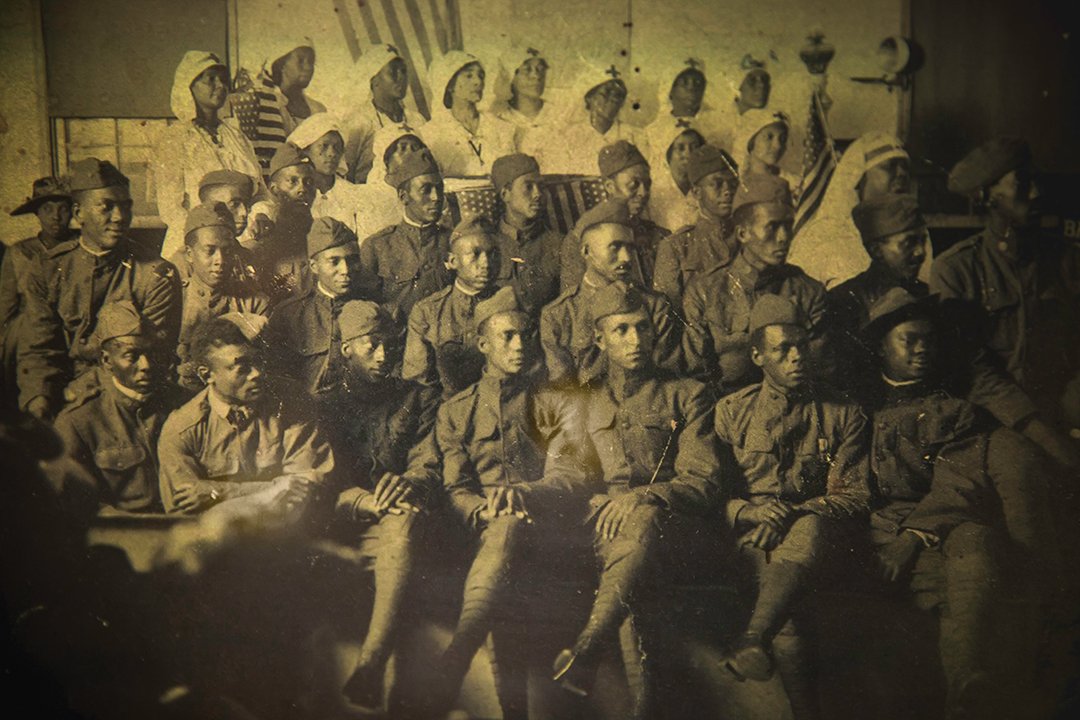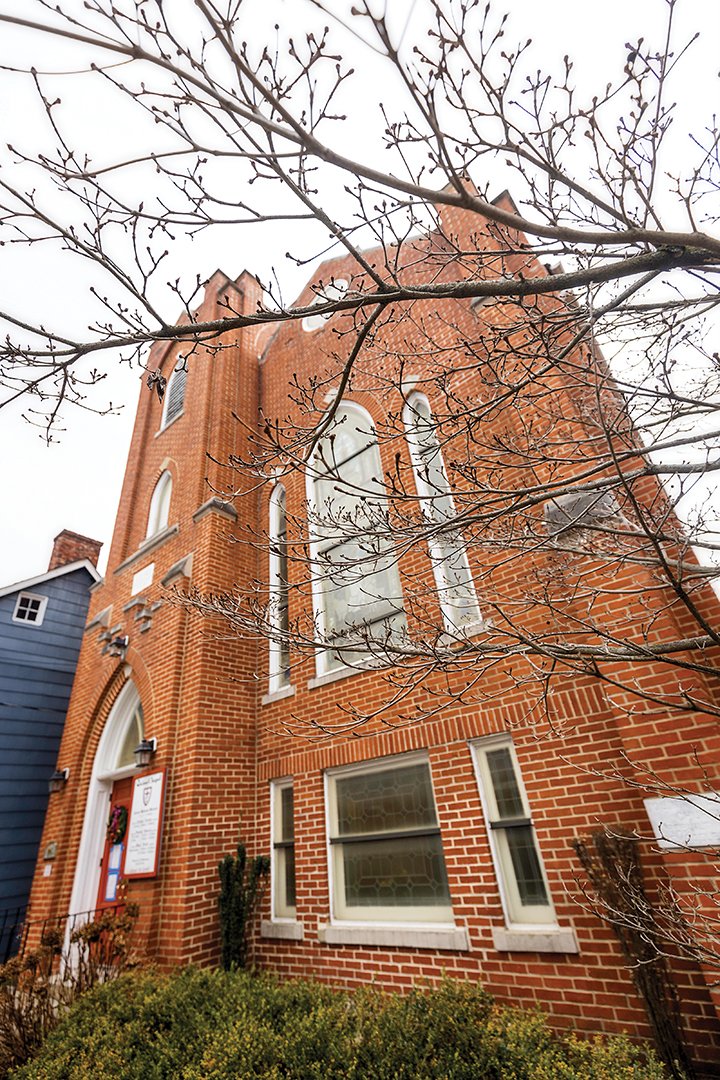Examining the Past
A WALK (OR DRIVE) THROUGH AFRICAN AMERICAN HISTORY
By Kate Poindexter
Photography by Turner Photography Studio
The path through Black history in the United States includes such well-visited destinations as Selma, Montgomery, Atlanta and Memphis, but it also reaches many often-overlooked locations on the trail of the African American experience, good and bad.
Frederick County has no shortage of these sites, and those wanting to learn more about Black history can take part in Visit Frederick’s tour of African American historic sites. There are 15 stops on a self-guided walking tour in Downtown Frederick and another 11 historic sites on a driving tour. Each location provides a glimpse into two centuries of African American contributions, with tourists invited to examine the lives of laborers, doctors, crafts people, clergy, musicians, politicians and entrepreneurs.
The stark realities of American history were, of course, played out in Frederick as they were in the rest of the nation. The tours don’t shy away from those facts. They are teaching tools and celebrations of survival and a thriving culture. “Frederick’s history is not just Thomas Johnson and Francis Scott Key. It’s the Civil War and Reconstruction periods — significant American history,” says Jake Wynn, marketing and communications manager at Visit Frederick. “And, good or bad, it needs to be told. Slavery, Reconstruction, Jim Crow, segregation—these things are hard to talk about.”
FOLLOWING HISTORIC STEPS
Those who want to take the self-guided walking tour can find printed brochures at the Frederick Visitor Center at 151 S. East Street or they can pull up an interactive map on their phones. Go to visitfrederick.org to find the Downtown Frederick African American History Walking Tour for descriptions of all 15 places. Here are some significant stops:
Laboring Sons Memorial Ground
The Beneficial Society of the Laboring Sons of Frederick City established a burial ground in 1851 at Chapel Alley, between 5th and 6th streets. Among those buried there were six Civil War veterans who served in segregated regiments. When the cemetery fell into disrepair, the city acquired the land in 1950 and built a park and playground. After many protests, the playground was dismantled and the park was transformed into a memorial and re-dedicated to the African American citizens interred there.
William O. Lee Unity Bridge
The suspension bridge is a prominent feature in Carroll Creek Park. It is named for William O. Lee, a city alderman who worked to give all Frederick citizens a seat at the table in local government. The bridge connects two banks on Carroll Creek and symbolically represents the end to Frederick’s segregated past.
Lester Bowie Mural
The life and work of jazz great and Frederick native Lester Bowie is celebrated in a mural at 69 S. Market Street. Bowie was born in Frederick County in 1941 and began studying the trumpet as a child. He moved to St. Louis where he explored the connection between jazz and other popular music and eventually co-founded the Black Artists Group and the Art Ensemble of Chicago. The mural was painted by Rafael Blanco in 2020.
Residence and Office of Dr. Ulysses Grant Bourne
Dr. Ulysses Grant Bourne grew up in Calvert County and came to Frederick in 1903 to practice medicine. He resided and treated patients at his home/office on Ice Street until 1953. In addition to being the first African American doctor on the staff at Frederick Memorial Hospital, he was the founder of the Negro Medical Society and co-founder of the Frederick Branch of the NAACP. His daughter, Dr. Blanche Bourne Tyree, was the first female doctor in Frederick.
Asbury United Methodist Church, former First Missionary Baptist Church, Quinn Chapel African Methodist Episcopal Church
Asbury dates back to its 1864 ancestor, Old Hill Church, which became Asbury Methodist Episcopal Church and dedicated in its present location at 101 W. All Saints Street in 1921. The church features a historic Moller pipe organ and a large basement gymnasium. The former First Missionary Baptist Church and Parsonage at 141 W. All Saints Street was built in 1773 and features unique architectural details. Quinn Chapel’s congregation was originally called Bethel in the late 1700s. In 1819, the congregation acquired the present site at 106 E. 3rd Street. It is said to be the location of the first Sabbath school for Black children and was headed by Bishop Benjamin Tucker Tanner, clergyman, scholar and social activist.
Visit Frederick’s Downtown tour complements a guided tour offered by the nonprofit African American Resources Cultural and Heritage Society (AARCH). “The Downtown self-guided tour is a great introduction of what folks will see on the AARCH guided tour,” says Wynn. “It is essential to take the AARCH tour to hear the information from people who lived it.”
The AARCH tour focuses on All Saints Street and surrounding areas, once the center of the African American community in Frederick. Tour guides are community members who lived in the community themselves or had family members who resided there. Find details about booking a guided AARCH tour at aarchsociety.org. Frederick County Public Libraries and AARCH will present the film The Tale of the Lion: Our Voices, Our Stories on Feb. 12 at the C. Burr Artz Public Library. The documentary features some of the oldest African American citizens in Frederick County sharing their memories, personal challenges with racial prejudice, strength and resilience, and community bonds. A community discussion led by AARCH society member Barbara Thompson will follow the film.
BEHIND THE WHEEL
African Americans shaped Frederick County’s landscape dating back to the founding of the nation, into the Civil War, and through the struggle from slavery to freedom. Tourists are invited to explore industries, plantations, battlegrounds, churches and communities on the African American History Driving Tour in Frederick County. Go to visitfrederick.org to see details of 11 historic sites, including these stops:
Catoctin Furnace, Museum of the Iron Worker
Thomas Johnson and his brothers established Catoctin Furnace at the foot of the Catoctin Ridge in 1776. It produced ammunition for the Continental Army and grew into a village complex with a concentration of specialized workers including enslaved Africans. It was in operation from 1776 until 1903. Johnson went on to become Maryland’s first governor. The site is now listed on the National Register of Historic Places and the National Underground Railroad Network to Freedom. In 2021 the Catoctin Furnace Historical Society opened the Museum of the Ironworker, featuring the facial reconstruction of two enslaved ironworkers buried at the African American Cemetery.
Plantations
Charles Carroll, one of the signers of the Declaration of Independence, owned the 10,000-acre tract of land known as Carrollton Manor. Five hundred enslaved people and tenant farmers lived and worked there. The Tuscarora manor house and St. Joseph-on-Carrollton Manor Catholic Church were built on the property. Nearby, in the Bishop Claggett Retreat Center, there is a cemetery with the remains of enslaved people. It is associated with the Buckingham Manor estate. Formerly enslaved people from these plantations founded the communities of Hope Hill and Flint Hill and established their own farms and worked in Buckeystown’s tanning yards, canning company and brickyard.
The Best Farm, part of Monocacy National Battlefield, is a 748-acre plantation, named for the David Best family who occupied it during the Civil War. It was previously known as L’Hermitage and it was established by the Vincendieres, a family of French planters from the Caribbean. L’Hermitage was the site of the second-largest population of enslaved people in Frederick County and is on the National Underground Railroad Network to Freedom.
The Needwood estate of Thomas Simm Lee near Burkittsville at one time enslaved nearly 200 people. Lee was Maryland’s second governor. The plantation was involved in agricultural work and family-run distillery operations. After emancipation, the town of Coatsville was established nearby at the foot of South Mountain where large farms were owned and operated by African American families.
African American Communities and Churches
Many African American communities in the county were established around churches and schools, and remnants of these historic buildings remain. The communities of Bartonsville, Centerville, Della, Pleasant View, Sunnyside, and Silver Hill/Wayman are featured on the driving tour.
“Out in the county, the African American communities are the touch point to the lost history of the 19th and 20th centuries,” Wynn says. He encourages area residents and visitors to explore them during Black History Month and throughout the year.
Ultimately, the exploration of the African American history cannot take place in a vacuum. “We must never forget that Black History is American History,” U.S. Rep Yvette Clarke once said. “The achievements of African Americans have contributed to our nation’s greatness.”




